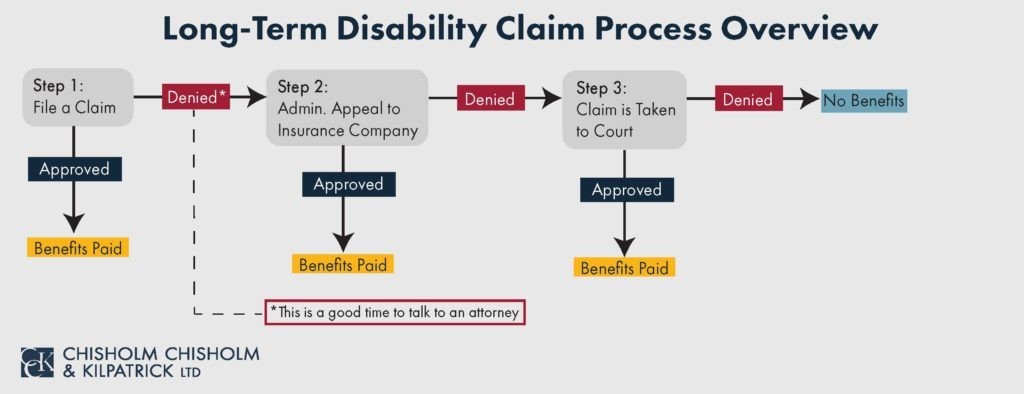When Does Long-Term Disability Start?

Every day, people suffer from medical conditions that impact their ability to work. Not being able to work in the same capacity as you did before, in addition to worrying about how you are going to provide for yourself and your family, is stressful. If you have long-term disability (LTD) insurance coverage, knowing when long-term disability starts is important so that you can better plan your financial future.
Do You Meet the Long-Term Disability Policy’s Definition of Disability?
The long-term disability process usually starts when you meet the definition of disability. Typically, the first definition of disability you need to meet is an “own occupation” definition of disability. However, the specifics of that definition can vary from policy to policy and, consequently, when long-term disability starts will depend on the terms of your particular policy. Often, long-term disability starts when you become unable to work, but sometimes long-term disability can start even while you are still working in some capacity. It is important to read your long-term disability policy carefully in order to understand what definition of disability applies to you.
Some policies have broad definitions of disability, which require you to be unable to work in order to qualify for long-term disability benefits. These definitions of disability will often say that you are considered disabled if you cannot perform the material and substantial duties of your own occupation.
However, other policies have narrower definitions of disability, which allow you to qualify for long-term disability benefits even if you are still working. Depending on your policy, this could mean that you can perform some, but not all, of the material and substantial duties of your own occupation, or that you can perform all of the material and substantial duties, but only on a part-time basis. Policies that will pay benefits even if you are still working typically require that you have lost a certain percentage of your income due to your condition(s).
https://cck-law.wistia.com/medias/xl1p07h1oo?embedType=async&videoFoam=true&videoWidth=640
How Long is the Waiting Period?
Although long-term disability typically starts when you meet the definition of disability, the insurance company does not immediately begin paying benefits once that definition is met. Usually, you must remain disabled for at least 90 to 180 days in order to start receiving benefits. This is known as the waiting, or elimination, period for LTD benefits. For more information about the long-term disability waiting period, please see our article on Long-Term Disability Waiting Period.
Are There Other Applicable Policy Provisions Regarding When Long-Term Disability Starts?
While meeting the definition of disability is usually the most crucial aspect of your long-term disability claim, there may be other provisions in your policy that affect your long-term disability start date. It is important to read your entire policy to ensure that you fully understand all applicable provisions.
Contact Chisholm Chisholm & Kilpatrick LTD
While most people begin the long-term disability process after becoming unable to work due to a medical condition, you may be able to begin the long-term disability process earlier, depending on the terms of your policy, if you are working in a reduced capacity due to your medical condition(s) and the resulting loss of income.
At Chisholm Chisholm & Kilpatrick LTD, our team of experienced attorneys and professionals understand how important it is to get your long-term disability benefits in a timely manner. We understand that you rely on these benefits to support you and your family. Contact us now at (401) 237-6412 for a FREE consultation to see if we can help you get the benefits to which you are entitled.

Share this Post